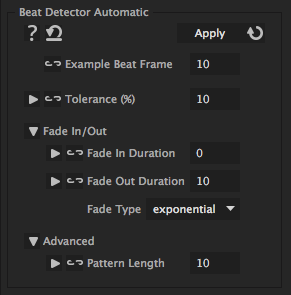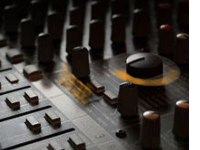Beat Detector Automatic
tip
BeatEdit for After Effects has a very different, powerful and in particular very easy to use approach to animate properties in sync with music.

Beat Detection iExpressions can be applied to properties which represent the audio amplitude of some music (i.e. properties which you created with the function 'convert audio into keyframes' of the keyframe assistent). They can detect the beats in the music such that you can animate various properties according to the music. The beat detectors just recognize the beat and don't do any animation, yet. You can animate properties using other iExpressions (like the 'Change on Beat 1D') which are then linked to the beat detector. This setup allows to animate several properties according to the same beat. To use the beat detector automatic, you just have to provide one example frame where the music contains a beat and the iExpression automatically searches for all other places where the wave form looks very similar. Theses are then also considered to be beats. This works in particular well, if the beats are clearly visible in the wave form of the audio.
Example Beat Frame
specifies one example frame, at which the beat occurs. The iExpression tries to detect all other occurences of the beat automatically.
Tolerance (%)
determines how similar other parts must be to the given example beat in order to be identified as beat, too. The lower this number, the less beats are detected. A tolerance of 0 means that other parts are identified as beats only, if they have exactly the same audio amplitude as the example beat.
Fade In/Out
Fade In Duration
determines the number of frames over which the beat is faded in. If this is set to 0, the iExpression abruptly jumps on each beat from 0 to 100. If it is set to 10, the value starts already 10 frames earlier to slowly increase from 0 to 100.
Fade Out Duration
determines the number of frames over which the beat is faded out. If this is set to 0, the iExpression abruptly jumps after each beat from 100 to 0. If it is set to 10, the value slowley decreases over 10 frames from 100 to 0.
Fade Type
determines whether the beat signal fades in or out in a linear or exponential fashion.
Advanced
Pattern Length
determines the length of the beat in number of frames. 10 means, for example, that the 10 frames around the given example beat are compared to other audio amplitude of remaining parts in order to find the other occurences of the beat.
Download at aescripts.com
Animating to Musik - Part 1
tip
This tutorial for sternfx.com uses different audio and linking iExpressions to animate things automatically according to music.
